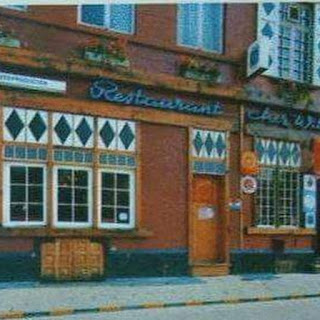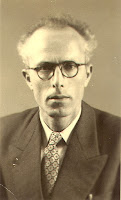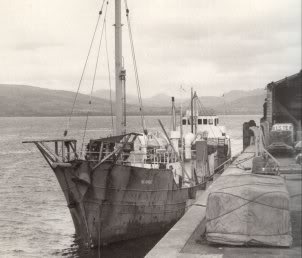In
1969, with my favourite (offshore) stations gone, my radio listening was at a
low ebb. Professionally I was getting used to office life at the
ferry company in Zeebrugge and the occasional trip to Camden Crescent
in Dover, where the shipping company's HQ was situated. I remember
one of my UK colleagues once made me don a hair cap and subsequently
showed me around the large temperature controlled computer room in
another part of town. It was the first time I came face to face with
such a device. It was a big bulky beast that ingested large stacks
of punch cards. Apart from subsequently disgorging reams of invoices
it did very little else.
It
was also the year that John Lennon and Yoko Ono staged a “bed-in”
for peace during their honeymoon in Amsterdam. To the delight of
children in 1969 the bouncy Space Hopper hit the shelves. On
Belgium's independence day (just a coincidence), to the amazement of
grown-ups and youngsters alike, Neil Armstrong and Buzz Aldrin went
and proved once and for all that the moon was not made of green
cheese. Music fans especially remember 1969 as the year in which the
legendary Woodstock Festival took place.
 In
the meantime I didn't have an inkling that in an office in the
Albisriederstrasse* in Zürich two young Swiss gentlemen were
preparing my happiest adventure in radio. Erwin Meister and Edwin
Bollier knew each other from school and after graduating they went
into business together. To begin with they purchased a car-radio
patent. Later, in 1968, they made good installing a communications
network for the International Red Cross between Europe and Eastern
Nigeria. This was to fascilitate the aid operation during the war of
secession in Biafra in the late 60's. The technology made the largest
humanitarian airlift possible since the Berlin blockade in 1948. It
is estimated that the relief effort by all the agencies involved
saved the lives of 2 million Biafrans. However it may also have
prolonged the conflict. Then after a few other lucrative business deals,
with money in the bank, the
Swiss duo set out
to realise a long held dream, to equip an offshore radio station for
the German and British market.
In
the meantime I didn't have an inkling that in an office in the
Albisriederstrasse* in Zürich two young Swiss gentlemen were
preparing my happiest adventure in radio. Erwin Meister and Edwin
Bollier knew each other from school and after graduating they went
into business together. To begin with they purchased a car-radio
patent. Later, in 1968, they made good installing a communications
network for the International Red Cross between Europe and Eastern
Nigeria. This was to fascilitate the aid operation during the war of
secession in Biafra in the late 60's. The technology made the largest
humanitarian airlift possible since the Berlin blockade in 1948. It
is estimated that the relief effort by all the agencies involved
saved the lives of 2 million Biafrans. However it may also have
prolonged the conflict. Then after a few other lucrative business deals,
with money in the bank, the
Swiss duo set out
to realise a long held dream, to equip an offshore radio station for
the German and British market.
Mebo
Telecommunications AG, owned by the Züricher businessmen, acquired a
Norwegian coastguard ship the Bjarkoy and renamed it Mebo. As the
vessel proved too small to serve as a radioship it was demoted to the
role of occasional supply tender, a purpose for which she really was
too big. As base for the marine broadcaster a larger craft was sought
and found, the 630 tons former freighter MV Silvretta, which was duly
assigned the name Mebo 2.
To
the best of my recollection it wasn't until early january 1970 that I
heard the news that a new offshore station was being fitted out in
the port of Rotterdam. There both vessels were also psychedelically
painted in a multitude of colours, an image which at the time was
humorously described as “an explosion
in a paint factory”. With hindsight this word picture would prove
to be an ominous one...
*pic MediaPages.nl





























